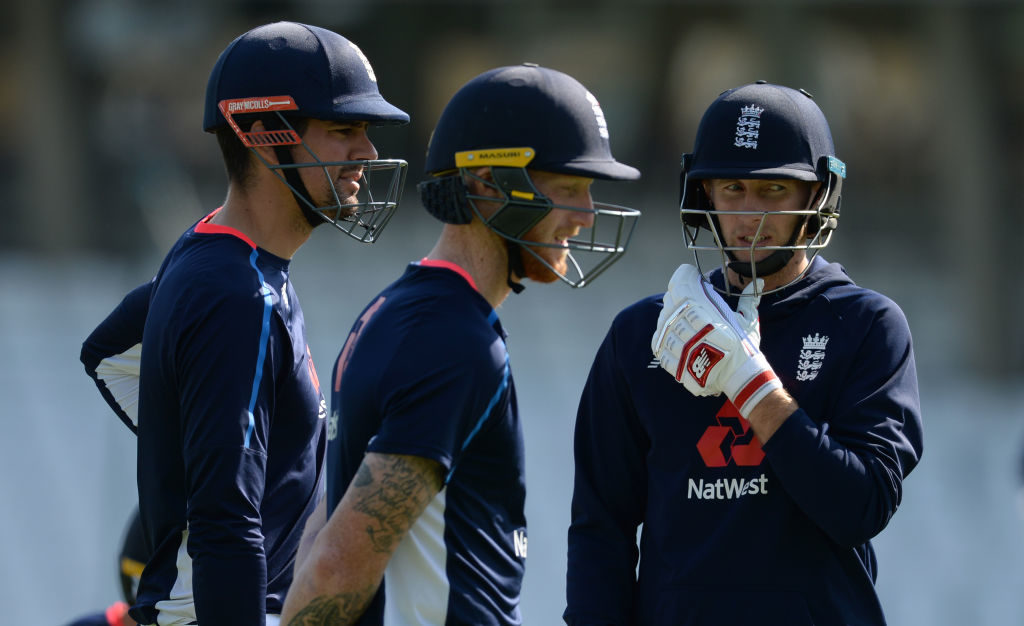It may be a ‘dead rubber’, but both England and India will want to end the Test series with a win at The Oval, writes ANITHA MADIKIZELA.
Although very hard to predict at times, the Englishmen put together enough runs and wickets to chasten the ICC No 1-ranked team in Test cricket.
Plenty of drama occurred during the series and, at times, it seemed like no spectator really understood what was going on as the public watched both teams try their absolute damndest to give the opposition the upper hand throughout. In fact, it’s rather fair to say that the series was actually actively lost by India, instead of being convincingly won by England.
Heading into what is almost always a tedious ‘dead rubber’ encounter at The Oval in London, let us take a look at some of the startling statistics to come out of the soon-to-be-concluded series.
As it stands
If any general consensus can be agreed upon over what we didn’t learn throughout this series, it is that English bowlers tend to almost always thrive on home soil ― and with the Dukes ball in hand. This series proved no different as the familiar names of Jimmy Anderson, Stuart Broad, Ben Stokes and Moeen Ali were at the top of England’s wicket-takers list once again.
Although many expected the two teams to out-muscle each other on an epic scale in the batting department – both housing the most destructive batting orders in modern-day Test cricket – it was rather disappointing for quite a few to see the series was ultimately decided on which team had the better bowling attack. If that was the focal point of all the build-up heading into the series, all of us would have bet our money on England taking it by a landslide.
Considering that’s what the series ultimately culminated to, one tends to take sympathy with the discerning public as this is not what was promised. While we all prepared for an all-out war between the bat and ball, instead we got a strange game of ‘who can tank faster than the other’ for four straight matches.
The English build-up
English bowlers are fantastic on home conditions and there’s nothing more I can add to that generally-accepted fact. Almost all the positives for England throughout this series have come from their specialist bowlers and all-rounders. It will come as no surprise that all the players awarded the Man of the Match award after English victories were all key bowling assets for the team.
It’s also no surprise that Anderson was able to draw ever closer to his target of becoming the highest Test wicket-taking pace bowler in history (needing just five more wickets to reach the milestone and surpass Glenn McGrath). His skill and guile were second to none as he picked up the series-leading total of 19 wickets in his four Tests played.
The rest of the usual suspects weren’t far behind as the list at the top includes Broad, Stokes and Ali respectively, and while we all know they inevitably played well, the scrutiny won’t be on them, but rather a top order under immense pressure.
Frankly, it feels like the English got away with housing a disastrous top order throughout the series. Their current collective series average of 18.92 is the third-lowest in the 223 series of three or more Tests that England have played and ― although English captain Joe Root will point to the fact that his team have just become the first since 1981 to successfully defend a target of 250 or fewer twice in a series (and only the second to do so since the 1950s) ― there’s obviously understandable concern over their current opening partnership and lack of a number three batsman.
An unexpected shining star rose from the English turmoil as Sam Curran displayed character and fight in all the matches he played. He needs just 65 runs to break the all-time record for the most runs in a series by a No 8 or lower batsman. In his debut summer, Curran has stolen the limelight with his determination and fearless cricket.
He has twice come to the crease with England floundering at 86-6 and made match-defining scores of 63 and 78 to help his team over the line. His consistency has seen him be the last wicket to fall in all five of the innings he played for England, making his claim to the Player of the Series award more than justified. A great outcome for the youngster considering he was inexplicably dropped for the third Test (which England inevitably lost).
What will be telling is how the selectors respond to their current top order crisis going forward. Keaton Jennings hasn’t fared much better and the two (along with India’s failing openers) face the humiliating possibility of becoming part of the first-ever five-Test series in which no opening batsman has reached 50 (the lowest previously, in 168 series of five or more Tests, is three). The position at number three is also up for grabs as no one has cemented their claim, forcing Root to take it up even though he prefers batting at four. The question is, will reinforcements be brought in to address these issues or will England’s No 3 batsman be Ali once again.
The Indian build-up
By India’s own admission, their batsmen have been appalling throughout the series. India came into the series with a lot of question marks over how their batsmen would handle the seam and swing from the Duke ball, considering how poorly they fared the last time they were in the country. And while captain Virat Kohli probably answered most of his doubters with a spectacular display throughout, his lone heroics were never going to be enough when the second-highest Indian run-scorer managed 300 runs less than the skipper’s 544 so far.
Kohli is 56 runs away from claiming second place (behind Don Bradman) on the list of the most 600-runs in a series of all time. He’s also got the chance to claim top spot on the list of players who accumulated 600 runs in a losing series. Having already done so against Australia in 2014-15, he’ll be the first to achieve the unfortunate feat in Test history. Furthermore, another half-century would make Kohli the first visiting batsman to reach 50 six times in a series in England since Brian Lara in 1995. Even though he’s been at the top of his game throughout, no doubt the series loss weighs heavily on him as the eternal competitor in him will be disappointed by how the rest of the batting line-up failed to support him.
As he chases 600 runs in the series, the next highest Indian run-scorers are Cheteshwar Pujara at 241 total runs (132 of them coming in one inning) and Ajinkya Rahane at 220. This has obviously been hugely disappointing for the team and (probably more disappointingly for the spectators) they were lucky that Kohli managed to refrain from standing on the dressing-room balcony and shouting, ‘For heaven’s sake, were none of the rest of you paying attention four years ago?’
The whole picture
Going into the fourth Test, we said that the series looked like it would ultimately be won by the best batting display, but I’ll swallow my words and concede that it just came down to which team could support their star player the best. In the eternal battles between the English bowlers and Kohli and the Indian bowlers and Curran, the young Englishman proved an invaluable asset that stewarded his country home.
While we all suffer through an irrelevant final fixture at The Oval, it will be fascinating to see what kind of responses each team can muster to try and walk away from the series with a little dignity.
Photo: Gareth Copley/Getty Images







